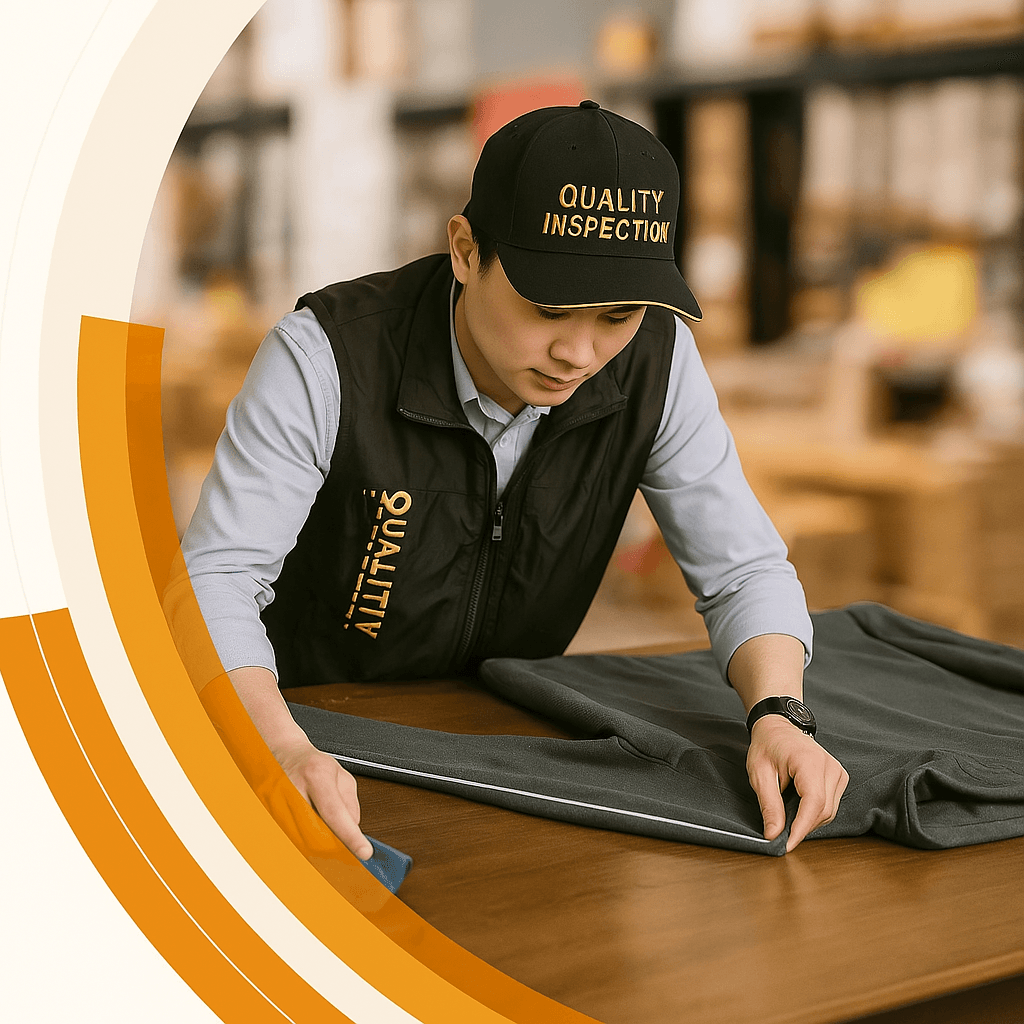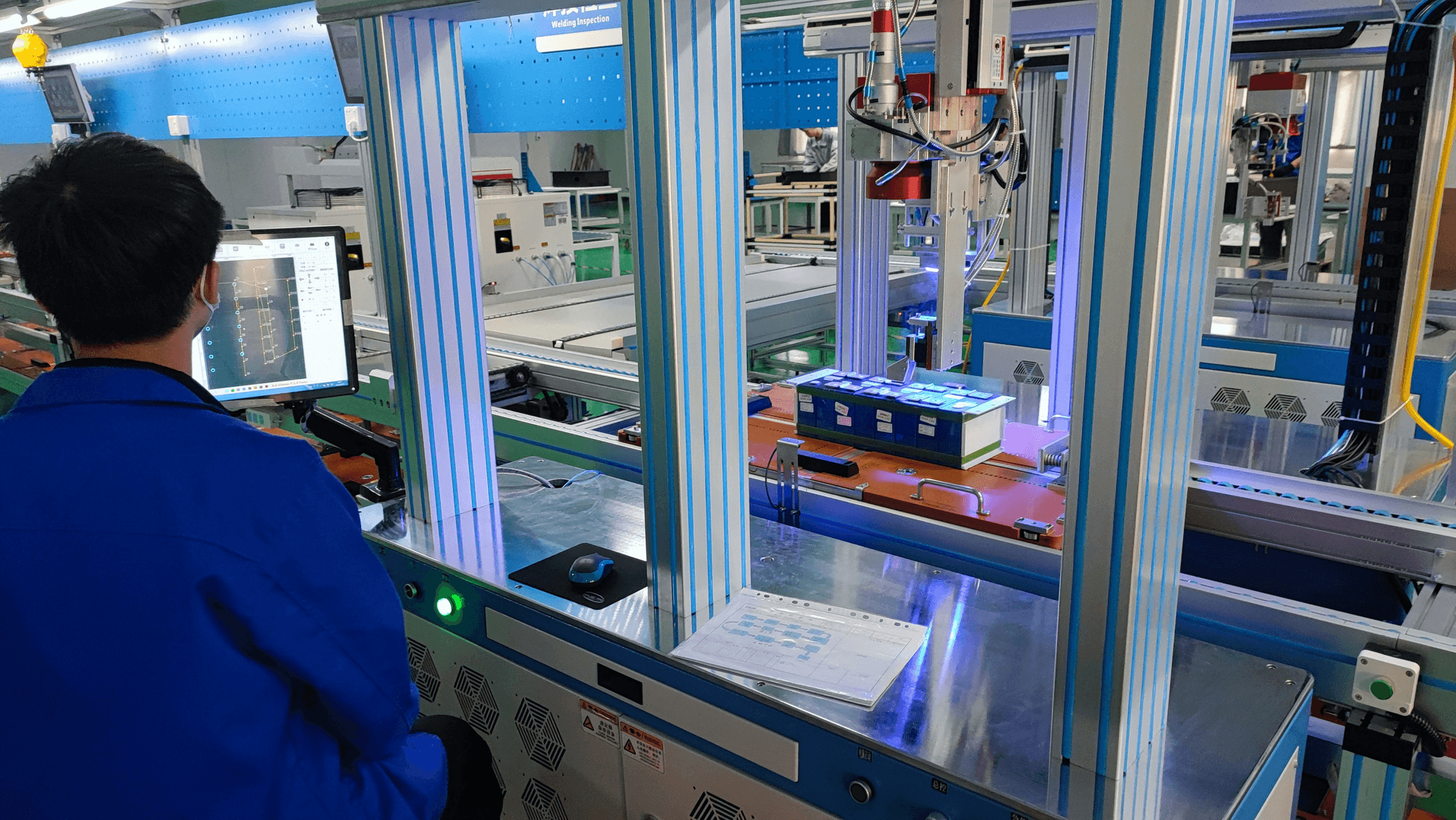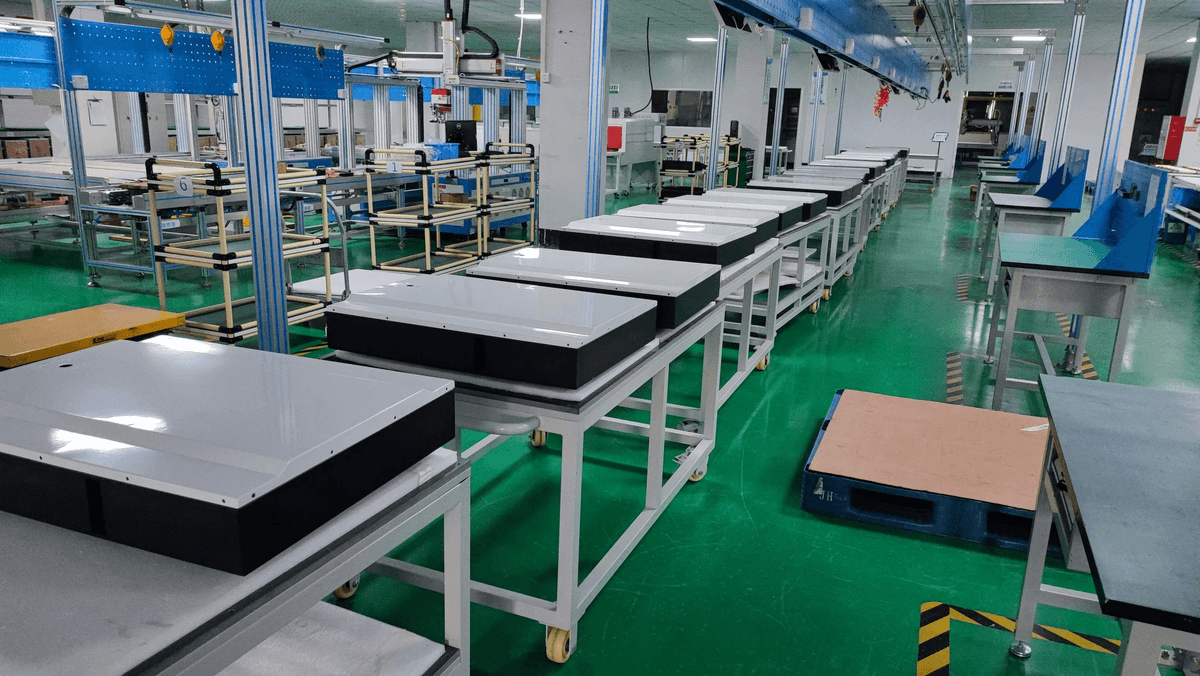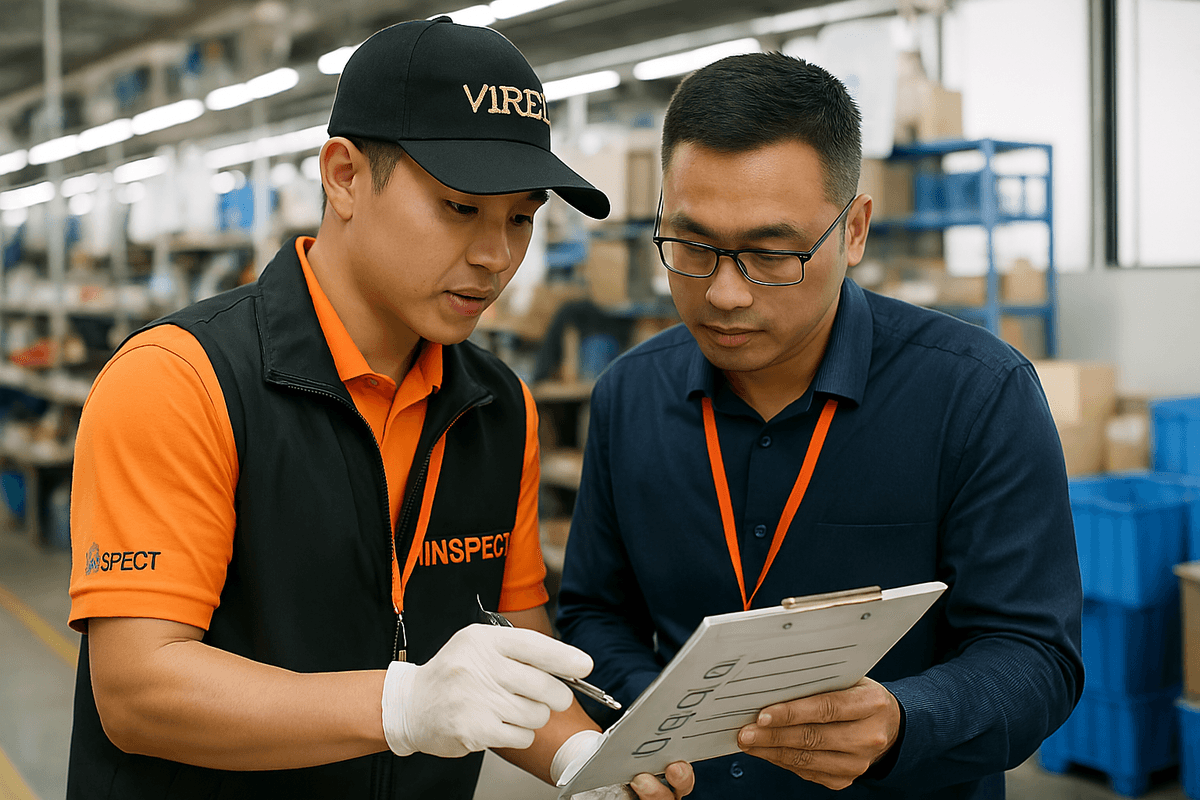Introduction

In the world of manufacturing and production, understanding Acceptable Quality Level (AQL) is crucial for maintaining standards. AQL serves as a benchmark that defines quality, helping businesses ensure that their products meet specific criteria before they reach consumers. By grasping what is AQL, companies can effectively implement quality control measures that not only enhance product reliability but also foster customer trust.
Understanding Acceptable Quality Level
So, what is AQL? It’s essentially a statistical tool used in quality inspection to determine the maximum number of defective items considered acceptable in a batch of products. By defining quality levels and setting acceptance criteria, AQL helps organizations streamline their quality assurance processes while minimizing waste and maximizing efficiency.
Importance in Quality Assurance
The importance of AQL in quality assurance cannot be overstated; it acts as a guiding principle for both manufacturers and consumers alike. With effective QC quality control measures rooted in AQL standards, businesses can consistently deliver high-quality products that meet market demands. Furthermore, by integrating AQL into their operations, companies can reduce the likelihood of costly recalls or reputational damage stemming from subpar goods.
Quality Control in Manufacturing
Quality control is the backbone of successful manufacturing operations, ensuring that every product meets established standards before it reaches the market. Utilizing AQL within these QC processes allows manufacturers to efficiently assess large quantities of items without exhaustive inspections for every single unit produced. This balance between thoroughness and efficiency makes AQL an invaluable asset in maintaining high-quality production lines while keeping costs manageable.
What is AQL

When diving into the world of quality control, one term frequently pops up: Acceptable Quality Level (AQL). So, what is AQL? It's essentially a statistical measurement that defines the maximum number of defective items considered acceptable in a batch during quality inspection. By establishing this threshold, businesses can maintain a high standard of quality assurance while avoiding the pitfalls of over-inspection.
Definition of Acceptable Quality Level
To define quality in the context of AQL, it’s crucial to understand that this metric acts as a benchmark for evaluating product quality. Specifically, AQL represents the worst tolerable process average when performing sampling inspections. It quantifies how many defects can be present in a sample before the entire batch is rejected, thus serving as an essential tool for effective quality control.
Role of AQL in Quality Control
The role of AQL in quality control cannot be overstated; it serves as a guiding principle for manufacturers and inspectors alike. By implementing AQL standards during QA inspections, organizations can efficiently balance risk and cost—ensuring products meet required specifications without excessive expenditure on testing. This systematic approach to defining acceptable limits fosters confidence among stakeholders and enhances overall product reliability.
AQL in Different Industries
AQL isn't one-size-fits-all; it varies significantly across different industries due to unique requirements and standards. For instance, in electronics manufacturing, where precision is paramount, even minor defects may lead to significant failures—thus necessitating stricter AQL levels compared to industries like textiles or packaging where tolerance for defects may be higher. Understanding how various sectors utilize AQL helps clarify its importance within broader frameworks of quality control and assurance.
Historical Context of AQL

The historical context of Acceptable Quality Level (AQL) provides a fascinating glimpse into how quality assurance and quality control have evolved over time. Understanding AQL is crucial, as it has been shaped by various factors, including technological advancements and global conflicts. This section will delve into the evolution of quality inspection methods, the impact of the World Wars on quality standards, and the influence of ISO practices on AQL.
Evolution of Quality Inspection Methods
Quality inspection methods have undergone significant transformations since their inception. In the early days of manufacturing, quality control relied heavily on visual inspections and rudimentary sampling techniques to determine product defects. Over time, more systematic approaches emerged, leading to the development of standardized procedures that define quality in measurable terms—an evolution that paved the way for concepts like what is AQL.
As industries expanded, particularly during the industrial revolution, there was an increasing need for more sophisticated quality assurance practices. The introduction of statistical methods in the mid-20th century revolutionized how manufacturers approached QC quality control; they began using statistical sampling techniques to assess large batches without inspecting every item individually. This shift not only improved efficiency but also laid down a framework for modern QA inspections that we still rely on today.
The continuous refinement in inspection methods reflects a broader understanding that consistent quality is essential for customer satisfaction and business success. As businesses grew increasingly global, establishing universal standards became imperative—thus highlighting why knowing what is AQL is so vital in today's interconnected market.
Impact of World Wars on Quality Standards
The two World Wars had a profound impact on industrial practices, including those related to quality assurance and control. During these tumultuous times, nations prioritized efficiency and reliability in production to meet military demands; thus, rigorous standards were developed to ensure that products met specific criteria without fail. The necessity for high-quality materials led to innovations in QC processes that would later influence civilian industries.
After World War II ended, many countries recognized that maintaining high-quality standards could significantly enhance economic recovery efforts. This recognition spurred governments and organizations to adopt formalized systems for defining quality—resulting in widespread implementation of practices such as AQL across various sectors. The war's aftermath underscored a crucial lesson: consistent adherence to defined quality measures could lead not only to better products but also stronger economies.
Moreover, this period saw an increased focus on international cooperation regarding standardization efforts—a trend that set the stage for future collaborations among nations about what constitutes acceptable levels of quality assurance globally. Thus, understanding how these historical events influenced current practices helps us appreciate why AQL remains integral today.
ISO Influence on AQL Practices
The International Organization for Standardization (ISO) has played a pivotal role in shaping modern approaches toward defining quality through its established standards—including those related specifically to Acceptable Quality Levels (AQL). Since its formation post-World War II, ISO has emphasized consistency across industries worldwide by providing guidelines that help organizations implement effective QC strategies while ensuring compliance with international norms.
ISO 2859-1 is one such standard directly related to sampling procedures and acceptance criteria based on statistical principles—essentially laying out how businesses can effectively apply what is AQL within their operations while maintaining rigorous oversight through QA inspections. By adopting these internationally recognized guidelines into their own frameworks for managing product integrity over time; companies have been able not only streamline processes but also build trust with consumers who demand reliable goods.
Furthermore—and perhaps most importantly—the influence exerted by ISO has fostered an environment where continuous improvement becomes part-and-parcel within organizational culture focused around both QA and QC initiatives alike! As we navigate future trends surrounding global trade dynamics; recognizing this interplay between historical contexts like wartime needs alongside standardized frameworks will remain vital when discussing topics such as “what defines acceptable levels” concerning product output moving forward!
AQL Sampling Plans

When it comes to quality assurance, understanding AQL sampling plans is crucial for effective quality control. These plans help organizations define quality standards and ensure that products meet those standards before they reach consumers. Sampling techniques provide a systematic approach to inspect a subset of items, allowing for efficient quality inspection without needing to check every single unit.
Overview of Sampling Techniques
Sampling techniques are the backbone of any effective AQL strategy. They allow manufacturers to assess the quality of their products without incurring the costs and time associated with 100% inspection. Various methods, such as random sampling, stratified sampling, and systematic sampling, each have their own merits depending on the context and specific requirements of quality control.
Random sampling is often favored for its simplicity; it involves selecting items at random from a production lot, which helps avoid bias in the selection process. On the other hand, stratified sampling divides a population into distinct subgroups before conducting inspections, ensuring that each subgroup is adequately represented in the sample. Each technique plays a vital role in defining what is AQL and how it can be effectively implemented in different manufacturing environments.
Determining Sample Size and Acceptance Numbers
Determining sample size and acceptance numbers is essential for implementing an effective AQL strategy in quality assurance practices. The sample size refers to how many units will be inspected from a lot, while acceptance numbers indicate how many defects can be found before rejecting an entire batch during QC quality control processes. Balancing these two elements ensures that companies maintain high-quality standards without overextending resources.
To calculate an appropriate sample size, factors such as lot size, desired confidence level, and acceptable defect rate must be considered carefully. For example, larger lots may require more extensive samples to ensure reliable results during quality inspection processes. By leveraging statistical methods alongside industry standards like ISO guidelines, organizations can establish robust criteria that define what is acceptable within their specific context.
Common AQL Tables Explained
Common AQL tables serve as practical tools in determining acceptance criteria during inspections and play a significant role in both QA inspections and overall quality control strategies. These tables outline various levels of acceptable defects based on different sample sizes and levels of risk tolerance defined by manufacturers or industries alike. Understanding how to read these tables allows teams to make informed decisions about product acceptance or rejection based on established parameters.
A typical AQL table includes columns specifying lot sizes along with corresponding sample sizes and acceptance/rejection numbers for various defect levels—commonly set at 1%, 2%, or 4%. By familiarizing themselves with these tables, organizations can streamline their QC processes while ensuring compliance with industry standards regarding what constitutes an acceptable level of defects within their production runs. Ultimately, this understanding enhances overall product reliability while reinforcing customer trust through consistent delivery of high-quality goods.
AQL and Quality Assurance

In the realm of quality assurance, understanding what is AQL (Acceptable Quality Level) is crucial for maintaining high standards in product manufacturing. AQL serves as a benchmark that helps organizations determine the maximum number of defective items considered acceptable during quality inspections. By integrating AQL into their processes, companies can ensure that they meet customer expectations while minimizing waste and costs.
Relationship Between AQL and QA Inspections
AQL plays a pivotal role in shaping QA inspections by providing clear guidelines on acceptable defect rates. When defining quality, organizations can utilize AQL to create a structured approach to quality control, ensuring that products not only meet specifications but also align with consumer expectations. As a result, QA inspections become more efficient and effective, leading to enhanced product reliability and customer satisfaction.
Furthermore, incorporating AQL into QA inspections allows for objective assessment criteria that can be consistently applied across different batches of products. This consistency is vital in industries where compliance with stringent regulations is mandatory. Ultimately, the relationship between AQL and QA inspections fosters an environment of continuous improvement in quality assurance practices.
AQL as a Tool for Quality Control
When it comes to quality control, what is AQL if not one of the most valuable tools at our disposal? By employing AQL methodologies within QC processes, companies can systematically identify defects before products reach consumers. This proactive approach not only protects brand reputation but also enhances overall operational efficiency by reducing rework and returns.
AQL serves as a guiding principle in establishing sampling plans that dictate how many items should be inspected from each batch during quality control checks. The use of established acceptance numbers ensures that any deviations from defined quality standards are caught early on in the production cycle. In this way, businesses leverage AQL to maintain high levels of product integrity while fostering trust among consumers.
Additionally, implementing AQL as part of a comprehensive QC strategy allows for better resource allocation within manufacturing processes. By focusing efforts on areas identified through statistical sampling methods outlined by AQL tables, organizations can optimize their inspection protocols without compromising on quality assurance principles.
Differences Between AQL, QA, and QC
To fully grasp the significance of what is AQL in relation to other concepts like QA (Quality Assurance) and QC (Quality Control), it's essential to understand their distinctions clearly. While both QA and QC aim at ensuring product excellence, they operate on different principles; QA focuses on preventing defects through systematic processes whereas QC emphasizes identifying defects through inspection activities.
In essence, defining quality involves recognizing these differences: QA encompasses strategies designed to enhance production processes while QC involves tactical measures taken during or after production runs to validate those strategies' effectiveness against set standards like those defined by AQL metrics. This nuanced understanding aids businesses in aligning their operational goals with industry best practices.
Moreover, knowing how these elements interact allows companies to create robust systems where each component—AQL measurements within QC frameworks—supports overall objectives for continuous improvement in both quality assurance and customer satisfaction levels across various sectors.
Real-World Applications of AQL

Understanding the practical implications of Acceptable Quality Level (AQL) can illuminate its significance in various sectors. From manufacturing to electronics, AQL is a cornerstone of quality assurance and quality control practices. By examining real-world applications, we can better appreciate how AQL helps define quality and maintain standards across industries.
Case Studies in Manufacturing
In the manufacturing sector, companies often face challenges ensuring product consistency and reliability. For instance, a furniture manufacturer implemented AQL sampling plans to enhance their quality inspection processes, reducing defects significantly while maintaining production efficiency. This case illustrates how understanding what is AQL can lead to improved quality control measures that not only satisfy customer expectations but also bolster the company’s reputation.
Another example involves a textile company that utilized AQL to streamline its QC quality control processes. By defining specific acceptance criteria based on customer requirements, they effectively minimized returns due to defective products. Such real-world applications highlight the role of AQL in achieving optimal quality assurance while navigating the complexities of mass production.
AQL in the Electronics Industry
The electronics industry presents unique challenges where precision and reliability are paramount. Here, what is AQL becomes critical as manufacturers strive for excellence amid rapid technological advancements and consumer demands for high-quality products. For instance, an electronics firm adopted an AQL-based approach for their QA inspections on circuit boards, which significantly reduced failure rates during testing phases.
Moreover, this industry often requires strict adherence to regulatory standards; thus, implementing effective quality control and quality assurance practices using AQL ensures compliance with safety regulations. By defining acceptable limits for defects within components, companies can mitigate risks associated with product recalls or safety hazards—showing that understanding what is aql plays a vital role in safeguarding both consumers and brands alike.
Role of China Inspection Pro in Quality Control
China Inspection Pro has emerged as a key player in facilitating effective quality control through rigorous application of AQL principles. They specialize in providing comprehensive QC services tailored to meet diverse client needs across various industries—ensuring that businesses achieve high standards through precise quality inspection processes. By leveraging their expertise in defining acceptable levels of defects based on international benchmarks, they help clients navigate complex supply chains efficiently.
Their work exemplifies how integrating what is AQL into operational strategies can enhance overall performance metrics for companies sourcing products from China or other regions known for manufacturing complexity. With a focus on delivering actionable insights through meticulous QA inspections, China Inspection Pro empowers businesses to uphold stringent standards while fostering trust among stakeholders—a testament to the profound impact of well-implemented quality control measures.
Conclusion
In the realm of quality control and assurance, understanding AQL is paramount. What is AQL? It's not just a technical term; it's a crucial concept that helps businesses maintain product quality while managing costs. Without a firm grasp of AQL, companies risk falling short in their quality inspection processes, leading to dissatisfied customers and potential losses.
Importance of Understanding AQL
Understanding AQL is essential for anyone involved in quality assurance and quality control. It defines the threshold at which products can be deemed acceptable or unacceptable, thus guiding effective QA inspections. By mastering this concept, businesses can ensure they meet industry standards while minimizing waste and maximizing efficiency.
AQL’s Role in Global Trade
AQL plays a pivotal role in global trade by standardizing quality expectations across borders. When companies understand what is AQL, they can communicate more effectively with international partners regarding product specifications and quality inspection processes. This clarity fosters trust and reliability, which are vital for successful trade relationships in an increasingly interconnected world.
Future Trends in Quality Control and Assurance
The landscape of quality control and assurance is evolving rapidly with technological advancements such as AI and machine learning. These innovations promise to enhance the way we define quality by automating inspections and improving accuracy in identifying defects based on established AQL standards. As we look ahead, integrating these technologies into QC practices will likely redefine how industries approach both QA inspections and overall product excellence.
